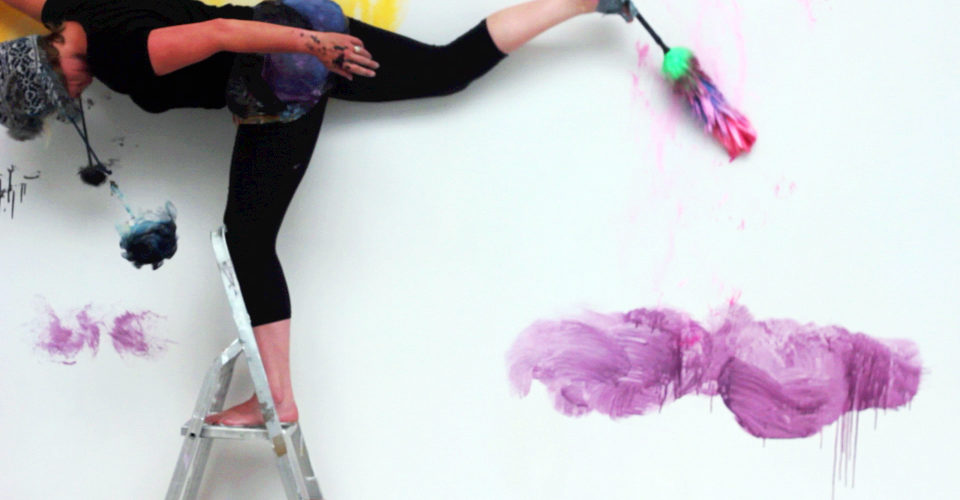Inside the Studio
 Polly Bagnall traces the movements of the body
Polly Bagnall traces the movements of the body
What are the major themes you pursue in your work?
I have been a practising artist since the 1980’s and my work has developed over that time but I see recurrent themes: My initial focus was the male gaze and how women are perceived. The physical experience of being pregnant led to a more literal exploration of the body. By using my body as a mark-making tool I could inhabit its movements, gestures and responses and record the visual traces these created. My work is influenced by firstly, my work as a psychotherapist where I have become attuned to the non-verbal communication between my clients and myself, and secondly, as part of a dance group I have developed my own physical language. In my painting practice I create ways to translate these nuanced bodily gestures visually.
As well as painting representational landscapes I record landscape phenomena (sounds, movement, light) in a series of abstract field recordings. Often in the format of a scroll the spontaneous graphic marks have an unpredictability that is influenced by John Cage and Robert Rauschenberg’s experimental work.
Colour is an important device in my work as it can create an emotional mood or change the energy in a piece of work. Colour and gesture are important means for me to express my dynamic response to the world.
What was the best advice given to you as an artist?
I was told that 20% of one’s time as a professional artist should be allocated to admin tasks- as a compulsive maker I find it hard to follow this advice. I don’t contact galleries or do enough social media, but at least this advice helps console me if I feel I’m spending too much time out of the studio.
Prefer to work with music or in silence?
My Dance Suite Series of paintings are made with a jazz musician playing live in my studio– the sessions are a dialogue between us– a sound suggests a movement which creates a mark which suggests other sounds. The paintings are created in one-off improvised sessions. I also make paintings in response to composed music- Pharaoh Sanders ‘Freedom’ and ‘Love is Everywhere’ and Keith Jarrett’s ‘Koln Concert”- with these pieces I will listen to the piece repeatedly prior to painting.
Other than this I do not listen to music whilst I paint, although I would not say I work ‘in silence’ as I tune into the ambient sounds around me- my paintings are a response to the here and now.
If you could only have one piece of art in your life, what would it be?
I think it would have to be Matisse’s Escargot. I find his use of colour invigorating and the use of open spaces is liberating. I realise now that Escargot uses the device of a frame– something I often use to ‘contain’ the less controllable spontaneous elements of my painting.
Who are your favorite writers?
Margaret Atwood, John Steinbeck and Gabriel Garcia Marquez. Of course I should also mention the book I co-authored last year about a Gang of five women activists from the 1930’s with whom my grandfather worked: Ferguson’s Gang The Remarkable Story of the National Trust Gangsters, by Polly Bagnall and Sally Beck and is published by Pavilion Books.


















